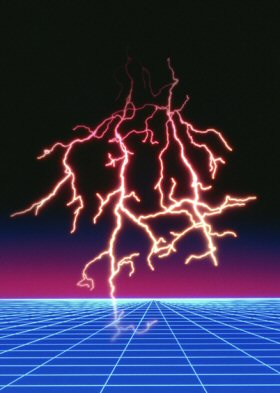15 April 2008
Laser Used To Get Thunderclouds Sparking
by Kate Melville
 Using a powerful ground-based laser, European scientists were able to induce electrical activity in thunderclouds, a precursor to stimulating lightning strikes on demand. Optics Express reports that the experiment was conducted at the top of South Baldy Peak, in New Mexico, where the laser pulses created electricity conducting plasma filaments in the clouds. The filaments were too short-lived to create air-to-ground lightning but the researchers believe that triggering actual lightning strikes is not far away.
Using a powerful ground-based laser, European scientists were able to induce electrical activity in thunderclouds, a precursor to stimulating lightning strikes on demand. Optics Express reports that the experiment was conducted at the top of South Baldy Peak, in New Mexico, where the laser pulses created electricity conducting plasma filaments in the clouds. The filaments were too short-lived to create air-to-ground lightning but the researchers believe that triggering actual lightning strikes is not far away.
"This was an important first step toward triggering lightning strikes with laser beams," says Jér�me Kasparian of the University of Lyon in France. "It was the first time we generated lighting precursors in a thundercloud." The next step of generating full-blown lightning strikes may come, he adds, after the team reprograms their lasers to use more sophisticated pulse sequences that will make longer-lived filaments.
Producing lightning strikes on demand would allow researchers to study the mechanisms underlying lightning. Moreover, triggered lightning strikes will allow engineers to evaluate and test the lightning-sensitivity of airplanes and critical infrastructure such as power lines.
Pulsed lasers represent a potentially powerful technology for triggering lightning because they can form a large number of plasma filaments - ionized channels of molecules in the air that act like conducting wires extending into the thundercloud. Until now, lasers have not been powerful enough to generate long plasma channels but the current generation of more powerful lasers, like the one developed by Kasparian's team, may change that.
During the tests, the research team quantified the electrical activity in the clouds after discharging the laser pulses. Analysis showed that their laser pulses indeed enhanced the electrical activity in the thundercloud where it was aimed-in effect they generated small local discharges located at the position of the plasma channels.
They could not generate plasma channels that lived long enough to conduct lightning all the way to the ground, however, as the plasma channels dissipated before the lightning could travel more than a few meters along them. The team is currently looking to increase the power of the laser pulses by a factor of 10 and use bursts of pulses to generate the plasmas much more efficiently.
Related:
Terrestrial Gamma Ray Mystery Deepens
Researchers Chase Earthbound Gamma Ray Bursts
Source: Optical Society of America
